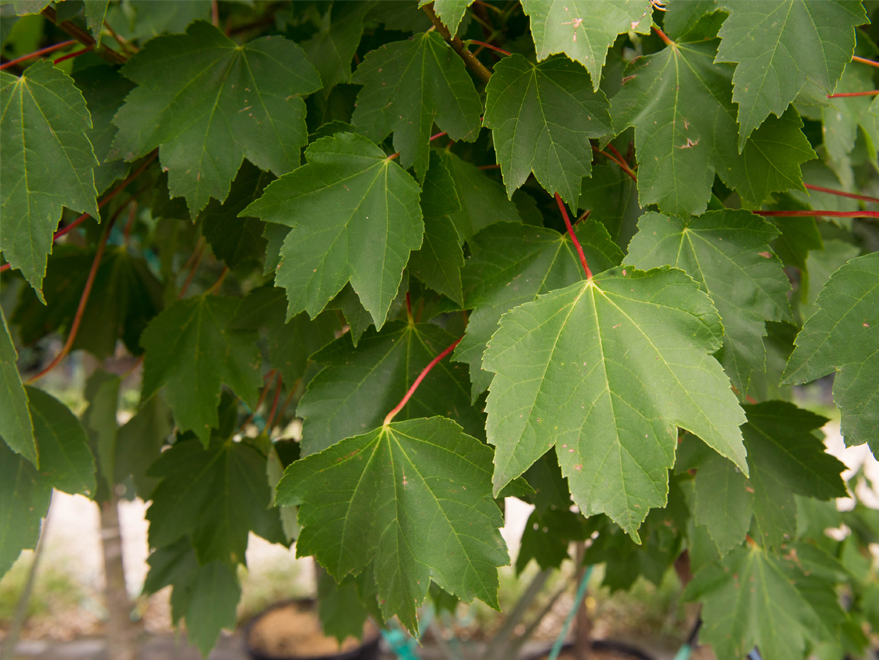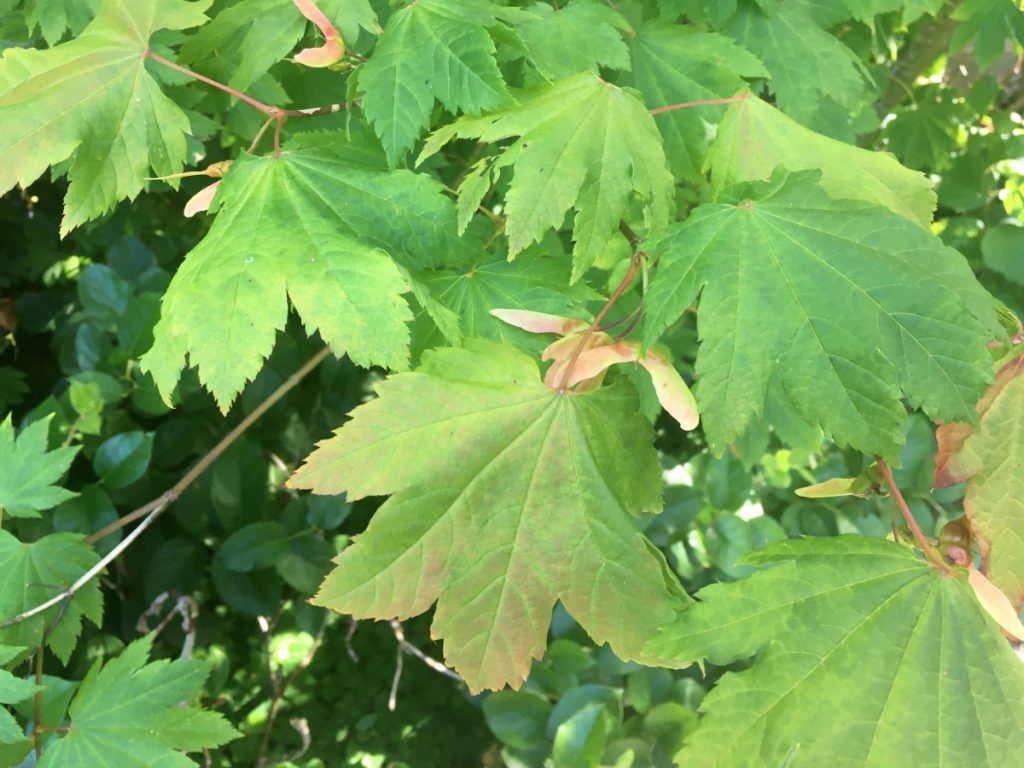

The vine grows well in full sun but can tolerate moderate shade. Usually, Virginia creeper is found in temperate deciduous forests. It can be found anywhere from southern Canada through the eastern United States, and even down into Mexico. Virginia creeper has a huge range and grows naturally throughout North America. Virginia creeper flowers are rather inconspicuous and typically bloom in the late spring and early summer. Once the tendrils find a suitable spot to latch on to, it glues itself to any surface whether it’s bark, bricks, or a chain-link fence. They are branched and tipped with incredibly effective adhesive pads. The tendrils of Virginia creeper emerge on the opposite side of the stem as a leaf. Although, perhaps a more accurate name would be “5 leaflet vine.” Occasionally, leaves will have only 3 leaflets, especially on younger plants. The common name “5 leaf vine” clues you into how many leaflets each leaf has. The vine has compound leaves, which means several leaflets are connected to the petiole. Virginia creeper leaves are very characteristic. For this reason, it can make an excellent addition to gardens, especially in eastern North America where the native vine will thrive.

Its fall color is surprisingly vibrant and stands out among other fall foliage in the forest. Come fall, the plant slowly turns color and displays bright red leaves. However, new leaves will often be a pleasant reddish-purple that adds some color to the plant. The Virginia creeper has pretty standard green leaves during spring and summer. When growing on its own without structural support, it forms dense ground cover. Most commonly, this plant is a woody vine that creeps along the ground or climbs trees, fences, walls, and pretty much any other vertical surface. It can take a few different grow th forms. Virginia creeper is a perennial plant in the grape family Vitaceae. Virginia Creeper ( Parthenocissus quinquefolia ) The 5 leaf vine can occasionally refer to other species, but Virginia creeper is the most common name.
Vine maple leaf how to#
Keep reading if you want to know more about the 5 leaf vine and learn how to identify different vine plants !ĭOWNLOAD PLANTSNAP Facts About the 5 Leaf Vine and Poisonous Plants Specifically, many poisonous plants with irritating foliage look quite similar but can be distinguished from the 5 leaf vine by a number of features. Its compound leaves and growth form look similar to many other plants that can be found growing near the 5 leaf vine. The Vine Maple’s fall color can vary widely from light yellow in the shade to bright orange or red when grown in sunnier locations.The 5 leaf vine is a common plant that is native to the eastern part of North America.

The new reddish woody growth also brings interest in spring, and it is followed by soft green leaves. This characteristic makes it the only maple capable of layering (producing a new plant while still attached to the ‘mother’ plant).įlowers of deep red and white grow along branches in the spring, contrasting with the red sheaths covering the leaf buds, and providing a colorful show in the garden. Sometimes the branches will root and develop a new root system.

Vine Maple trees are flexible, and their growth can bend back towards the ground. Its botanical name ‘ Circinatum’ refers to the rounded, although regularly lobed, maple leaves. These branches often root to produce new trees, creating dense thickets underneath the shade of taller conifers. The branching habit produces an elegant, tiered effect. The Vine Maple, although not really a vine, is so-called because it has very slender, often sprawling, branches. It grows from around 16 to 26 feet tall but occasionally will grow into a small or medium-sized tree, reaching 50 feet. The Vine Maple’s usual form is a multi-trunked, large shrub or tree. It is often found along rivers, growing close to the water or beneath conifers, lighting up the dappled shade with its beautiful yellow foliage in the fall. This tree can be found in clearings and grows at altitudes from sea level to 4,900 feet. It is found growing in the coastal forest understories beneath much larger trees, such as Douglas firs and Big Leaf Maples, from northern California to southwest British Columbia. The Vine Maple ( Acer circinatum) is native to western North America. Botanical Name: Acer circinatum Alternate Name: Pacific Northwest Native Maple


 0 kommentar(er)
0 kommentar(er)
